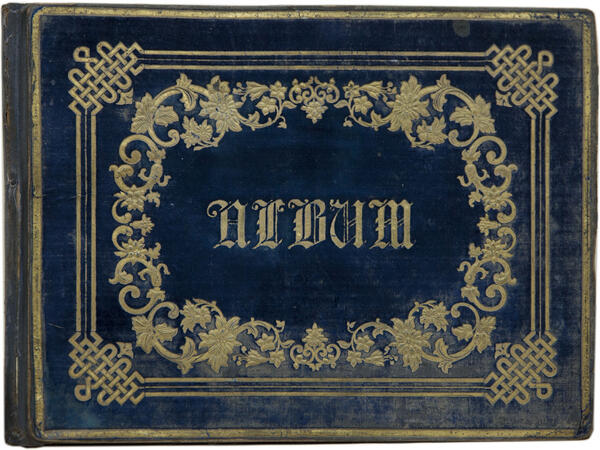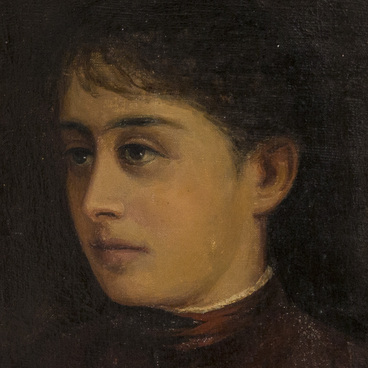Kosta Khetagurov first came to Stavropol in 1871 when he became a student at the provincial gymnasium and immediately fell in love with the city. It was here where he met a man that deeply influenced his character, Vasily Smirnov, a talented teacher of art at the gymnasium and artist in his own right.
Khetagurov returned to Stavropol in 1893, after his first exile. He got a job as a secretary for the newspaper ‘North Caucasus’, where he was involved with internal and external correspondence and kept the city chronicle.
Smirnov was very happy at the return of his student and invited him to live in his estate on Alexandrovskaya Street, where the poet stayed in a room with its own entrance. Khetagurov gladly accepted his mentor’s invitation. It was at this time that he presented him with a drawing album presented in the exhibition.
The Smirnov family was large; the artist had eight children. They immediately fell in love with their new resident and addressed him simply by name. Khetagurov was always happy to spend time with the children. The young Smirnovs enthusiastically listened to the poet’s stories and accounts, and learned his poems. Khetagurov got them a subscription to the children’s magazine “Intimate Word”, where he published his own fairy tales.
Thanks to Khetagurov, a theater appeared in the Smirnov house. It hosted performances such as “Living Pictures” (based on “Ruslan and Lyudmila” by Alexander Pushkin), the poem “Frost, Red Nose” by Nikolai Nekrasov, and other famous works. The roles were played by children, the costumes were designed by Khetagurov, which were then in turn sewed together by the Smirnovs. On this stage, the poet usually played the role of an author or narrator. Khetagurov lived and worked in Stavropol until 1897.
Four years later, the poet visited Stavropol for the third and final time. In 1901, he returned to work at the newspaper “North Caucasus”, initially holding the position of technical secretary, and later became an editor. Khetagurov created a series of articles called “Around the City”, and wrote many articles and feuilletons on a wide variety of topics. It was his work that made “North Caucasus” a popular publication.
Khetagurov wrote prolifically, gave lectures on natural science and history in a Sunday school, organized the city’s first children’s theater and fine arts circle, and put on performances. In 1902, he left Stavropol for the final time.
Khetagurov returned to Stavropol in 1893, after his first exile. He got a job as a secretary for the newspaper ‘North Caucasus’, where he was involved with internal and external correspondence and kept the city chronicle.
Smirnov was very happy at the return of his student and invited him to live in his estate on Alexandrovskaya Street, where the poet stayed in a room with its own entrance. Khetagurov gladly accepted his mentor’s invitation. It was at this time that he presented him with a drawing album presented in the exhibition.
The Smirnov family was large; the artist had eight children. They immediately fell in love with their new resident and addressed him simply by name. Khetagurov was always happy to spend time with the children. The young Smirnovs enthusiastically listened to the poet’s stories and accounts, and learned his poems. Khetagurov got them a subscription to the children’s magazine “Intimate Word”, where he published his own fairy tales.
Thanks to Khetagurov, a theater appeared in the Smirnov house. It hosted performances such as “Living Pictures” (based on “Ruslan and Lyudmila” by Alexander Pushkin), the poem “Frost, Red Nose” by Nikolai Nekrasov, and other famous works. The roles were played by children, the costumes were designed by Khetagurov, which were then in turn sewed together by the Smirnovs. On this stage, the poet usually played the role of an author or narrator. Khetagurov lived and worked in Stavropol until 1897.
Four years later, the poet visited Stavropol for the third and final time. In 1901, he returned to work at the newspaper “North Caucasus”, initially holding the position of technical secretary, and later became an editor. Khetagurov created a series of articles called “Around the City”, and wrote many articles and feuilletons on a wide variety of topics. It was his work that made “North Caucasus” a popular publication.
Khetagurov wrote prolifically, gave lectures on natural science and history in a Sunday school, organized the city’s first children’s theater and fine arts circle, and put on performances. In 1902, he left Stavropol for the final time.


